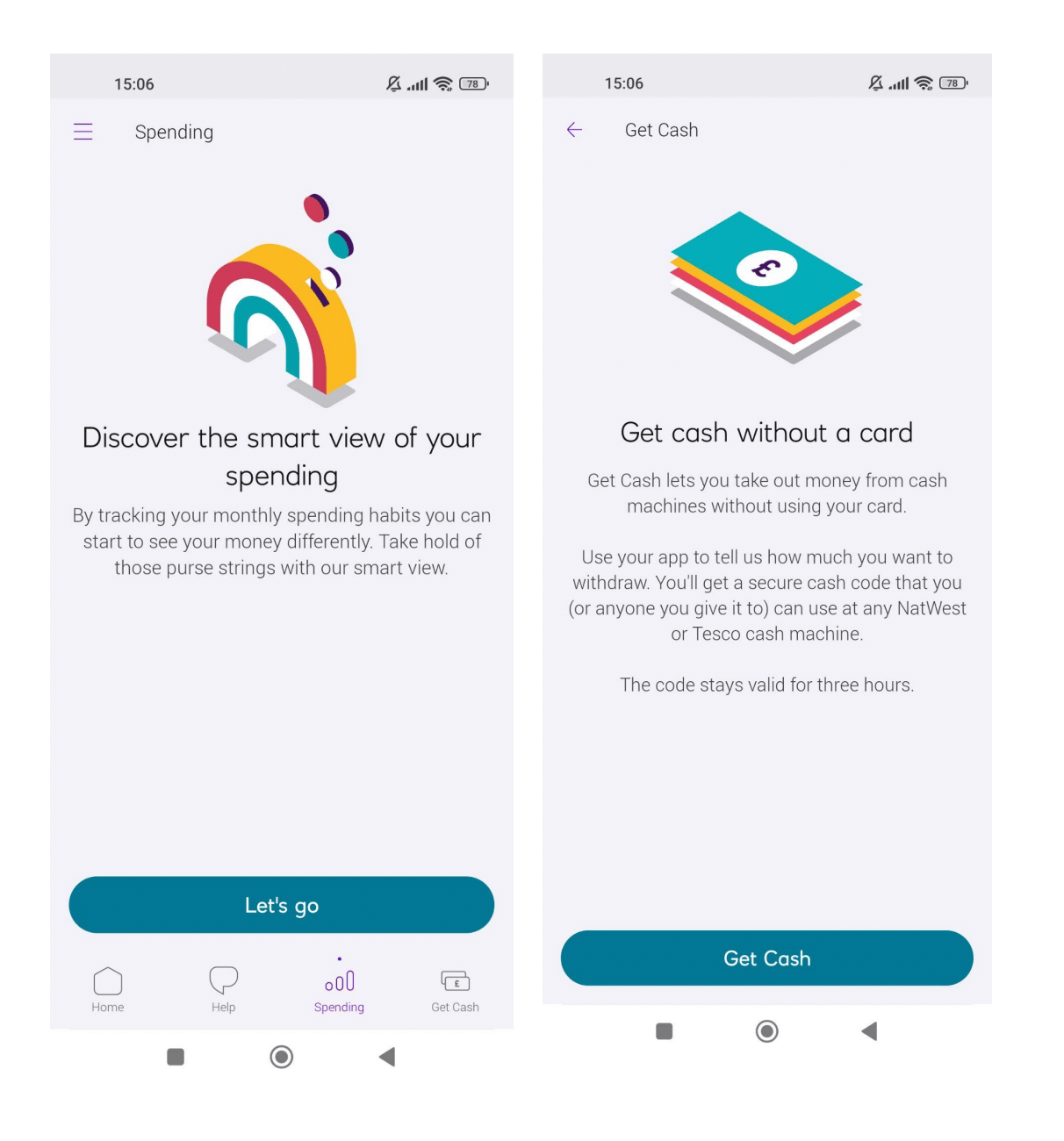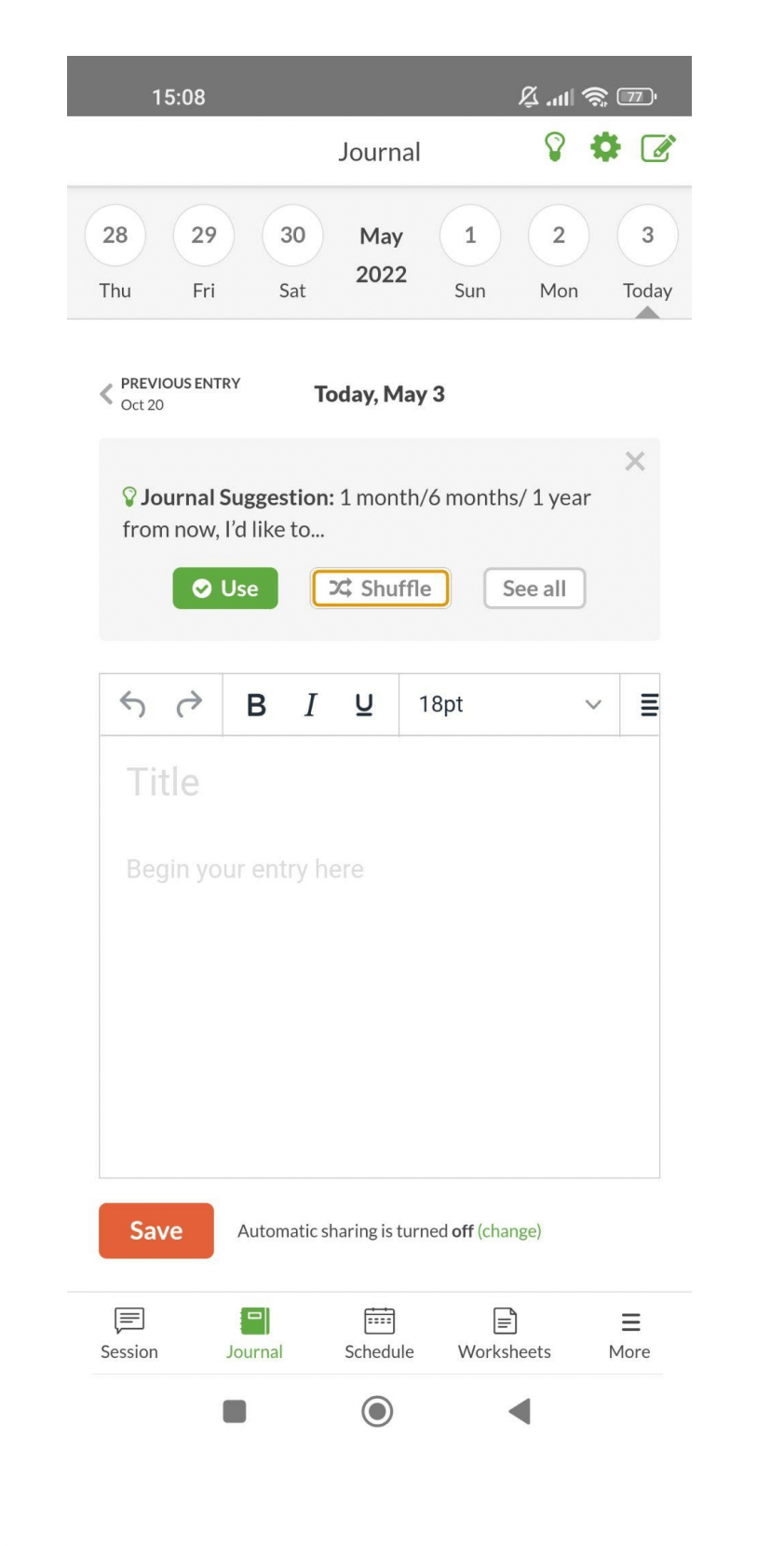UX writing is integral to the product design process. It can make or break the user experience — but getting it right can be tricky.
Those small but meaningful messages that guide you whenever you’re using a website or app are the result of extensive research, careful planning and countless iterations. Believe it or not, UX writing isn’t just an afterthought; it’s an entire UX discipline.
Despite that, there’s still lots of mystery around what UX writing is and what UX writers do. To help debunk this fascinating field, we’ve put together this very guide.
Keep reading to learn what UX writing is, how it’s different from copywriting and the typical process that UX writers follow. Stick with us to the end and you’ll also find some helpful tips and best practices for your own UX writing.
What is UX writing?
UX writing is the creation of all the copy you see, hear or encounter when using a digital product.
It belongs to the field of UX design, so it’s all about writing to enhance the user experience. There’s no such thing as decorative copy in UX writing: each and every word is crafted to help the user in some way. These concise yet powerful messages written by UX writers are known in the industry as “microcopy”.
You’ll come across UX microcopy whenever you use a digital product. This includes anything from apps and websites to video games, computer software, chatbots and voice technology (think Amazon Alexa or your smart TV). Ultimately, wherever there is an interaction between a person and a product or service, UX writers will create microcopy to guide the user and help them to complete their desired tasks.
UX writing covers things like:
- The welcome message you get when you open up an app on your phone
- The text you find on buttons, such as “Log in” or “Sign up”
- Error messages that pop up when something goes wrong — for example, to let you know that you’ve entered your password incorrectly
- The labelling of menu items on a website
- Instructions that guide you on what to do next — for example, if you’re booking flights, you’ll usually be prompted to select your travel dates and your destination, then to choose your seats, and so on
These little messages might seem like minor, insignificant details. But actually, UX writing is as important as UX design itself.
Why is UX writing so important?
UX writing is critical because it helps to shape the overall user experience. The user experience (or UX) describes how easy it is for the user to navigate and interact with a product or service, and how seamlessly they can complete their desired tasks (e.g. booking a flight or buying a cinema ticket).
If the experience is good, the user will happily use that particular product again. From a business perspective, that’s a loyal customer who will continue to interact with (and most likely recommend) the brand. If the experience is bad, the user will quickly seek a more user-friendly alternative. That’s a customer lost and a hit to the brand’s reputation. You can learn more about the value of UX design in this post.
UX writing has a pivotal role to play in either helping or hindering the user experience. In fact, the most successful brands (like Google and Airbnb) have dedicated UX writers in their design teams. UX writing is not just an afterthought or an add-on once the product has been designed; it’s an integral part of the design process itself.
UX writing vs. copywriting: What’s the difference?
UX writing is not the same as copywriting. Copywriting is typically a marketing discipline, written with the aim of attracting new users or customers and eventually persuading them to take a certain action.
Copywriting covers things like social media posts and captions, marketing emails and newsletters, blog posts, whitepapers and ebooks and ad copy (for example, the ads that appear right at the top of the search results when you look something up on Google).
By contrast, UX writing focuses on the copy within the product itself. It seeks to guide the user and provide a smooth experience.
UX writing examples
When it’s done well, UX writing blends seamlessly into the overall user experience — you’re not necessarily conscious of it being there. But, if you’re looking for them, you can find examples of UX writing everywhere. We’ve snapped some microcopy from various apps to show you what UX writing looks like in action.
UX writing example #1: The Natwest mobile banking app
Natwest banking customers can use the mobile app to access their account on the go. Clear, simple UX writing helps users to navigate the app and prompts them to take certain actions — like entering their passcode to log in or clicking to get an overview of their spending patterns.
UX writing example #2: The BetterHelp online therapy platform
BetterHelp is an online portal that provides video and chat-based counselling and therapy services. Users can schedule therapy sessions, add journal entries and chat with their therapist via the mobile app — with clear microcopy to guide them at every step.
UX writing example #3: The GetYourGuide mobile app
GetYourGuide is an online travel service for booking tour guides and excursions. The microcopy throughout the GetYourGuide app guides the user through the process of discovering and booking new tours and pulling up tickets for existing bookings.
Who is responsible for UX writing?
UX writing is a crucial part of the user experience, and there are professionals who are dedicated entirely to this aspect of the product design process: UX writers.
“UX writer” wasn’t always the well-known job title it is today. But, with big brands like Google and Airbnb leading the way by bringing dedicated UX writers on board, both UX writing and the UX writer job title have gained recognition in recent years. Nowadays, UX writers are increasingly considered an integral hire for the design team, especially in larger tech companies where specialist UX roles are more commonplace.
In addition to actually writing UX microcopy, UX writers may also be involved in conducting user research, creating and maintaining a content style guide, helping to develop the overall content strategy for the product and running tests to evaluate and improve existing UX copy.
What do you need to be a UX writer?
There are two main boxes you’ll need to tick if you want to become a UX writer:
- Expert knowledge of UX design principles and the UX design process
- Excellent (micro)copywriting skills
UX writers are, first and foremost, UX professionals. They apply their writing skills in the very specific context of product design, so they must have expert knowledge of UX design principles and how the product design process works.
And, of course, UX writers are skilled at creating concise and meaningful copy that guides the user at just the right moment in their journey. At the same time, they’re able to write copy that’s in line with the overall brand and tone of voice.
Being part of the UX design team, UX writers must also be adept at conducting and analysing user research, collaborating and communicating with different stakeholders (including UX and UI designers) and running tests to improve their copy (and, in turn, the user experience).
The UX writing process
Just like designers, UX writers follow their own process. Generally, the UX writing process covers some or all of the following steps.
1. Scope out the project
The UX writer will start by learning about the user problem the design team wants to solve and understanding the objectives of the project. This includes figuring out exactly what part of the product or user journey they will be writing copy for and the goals their copy should serve.
2. Conduct competitor research and analysis
To inform their approach to the project, UX writers may look at what competitors are doing. In particular, they’ll look at what kind of terminology is being used in the industry, as well as the structures and flows other products tend to follow.
3. Ideate and sketch (with words)
At this point, the UX writer will have seen a wireframe of the design they’re writing for. For example, if they are tasked with writing copy to guide the user through the process of creating a new account, they will see how the UX designer has mapped out the flow and structure of the relevant screens.
With that in mind, the UX writer will ideate as many different versions of the copy as they can. At this stage, the copy ideas they come up with are the equivalent of rough sketches — they’re not yet writing to polished perfection.
4. Prototype and revise
Having sketched out their copy ideas, the UX writer can then prototype them. If the designer has created a wireframe in Figma (or any other wireframing tool), the UX writer can usually add their copy to the same file to see how it sits within the proposed design.
This step helps to uncover any issues with how the text and the designs interact. Perhaps the proposed copy is too long for a particular section of the design — or perhaps the design needs to incorporate additional elements in order to accommodate some essential copy. Both the UX writer and the UX designer can make revisions that will ultimately benefit the end user.
5. Refine, user test and iterate on the copy
Based on the outcomes of the prototyping phase, the UX writer will polish up their copy until they consider it user-ready. They’ll then collaborate with the UX designer or UX researcher to test the copy on users, gather feedback and iterate on it. This process of testing and iterating can be ongoing and doesn’t necessarily have an end point. That’s the nature of UX, after all: continuously improving the product to meet the user’s needs.
6. Create documentation
As with any role in UX, it’s good practice to document your work and keep track of how the UX writing process evolves. This enables UX writers to establish conventions and best practices, which in turn can help to achieve consistency — an essential principle for a good user experience. You can learn more about the importance of UX documentation (and some of the best UX documentation tools) in this post.
That’s one version of what your UX writing process might look like. Next: some tips and best practices for outstanding UX writing.
UX writing tips and best practices
UX writing takes practice. It’s not just a simple case of writing instructions for the user and making sure they fit on the screen. It requires a careful balancing act to hit that sweet spot of being concise and functional, blending in with and aiding the user experience, while also injecting a hint of personality (whatever that may mean for the brand in question).
So how can you make sure your UX microcopy gets off on the right foot? Here are 5 UX writing tips and best practices to keep in mind.
1. Be concise and efficient
Every piece of microcopy should serve a clear purpose. If it doesn’t help or guide the user in some way, it has no place on the interface. Seek to convey the message as concisely and efficiently as possible, trimming away any excess “fluff”.
For example: “Enter your passcode” is much more efficient than “You must enter your 6 digit passcode in order to log in.”
2. Don’t make the user think
When it comes to UX writing, simplicity is your friend (and the user’s) Avoid complex, convoluted sentences that require the user to stop and think. Always favour simplicity and clarity — make it easy for the user to understand exactly what they need to do.
For example: “I don’t want to delete my account” is a confusing sentence whose meaning isn’t immediately clear. A clearer alternative would be: “I want to keep my account.”
3. Use plain language and avoid jargon
You’re writing to help the user, so make sure you’re writing in their language. That is: plain language which doesn’t require any technical or expert knowledge to be understood.
For example: “Log your daily macronutrients and micronutrients” could be pretty confusing for someone who isn’t familiar with those terms. “Update your food log” is a nice jargon-free alternative.
4. Write in the active voice
UX writing is about engaging the user and you can do this much more effectively and directly if you write in the active voice (as opposed to the passive voice).
For example: “A profile photo must be uploaded before you can complete your account creation” is rather awkward and long-winded. Switching to the active voice improves the message dramatically, like so: “Upload a profile photo to finish creating your account.”
5. Write for inclusivity and accessibility
This is a must for any and every part of the UX design process and UX writing is no exception. Write in a way that can be understood by everyone, regardless of how they’re accessing the product.
For example: Not everyone who is consuming your copy will be reading or seeing it; they may be accessing it via a screen reader. In that case, copy that says “See more options here” will exclude those people. “Show more options” would be a more inclusive way to convey the same message.
Writing for inclusivity and accessibility is a huge and important topic and extends far beyond the one example we’ve provided here. Learn more in Adobe’s guide to inclusive UX writing.
How to learn UX writing
If you’re keen to master the art of UX writing, there are plenty of resources out there to get you started.
Start simple with YouTube videos (like this UX Writing 101 tutorial or this longer video on the fundamentals of UX writing), blogs (we love The UX Writing Hub and The UX Writers Collective), and books (here’s a selection of 5 books that will help you become a well-rounded UX writer).
If you want to learn UX writing in order to become a professional UX writer, consider a UX writing course or certification. Some of the most popular UX writing courses include UX Writing Fundamentals provided by the UX Content Collective, the UX Writing Academy Training Program taught by UX Writing Hub, and this Microcopy & UX Writing course created by Kinneret Yifrah and available on Coursera.
Brand new to UX? Start from the very beginning with this comprehensive introduction to UX design.










